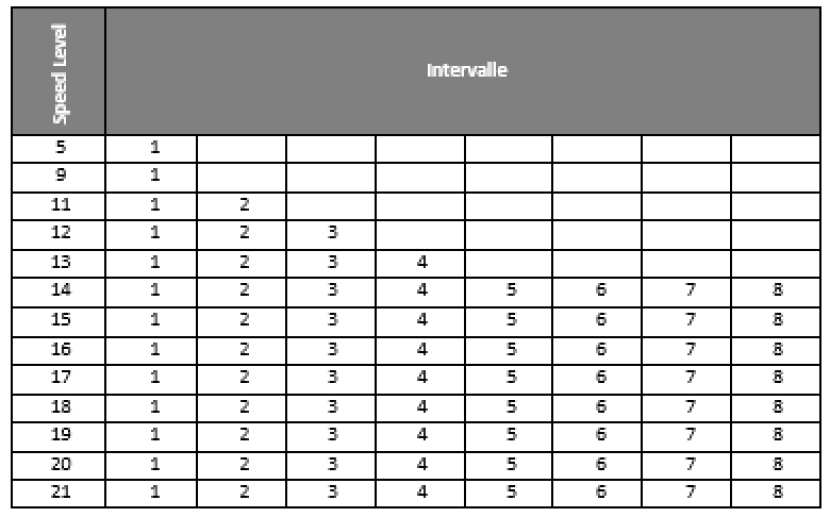Yo-yo test
The test is suitable for assessing aerobic performance in game sports characterised by intermittent exertion and constant stop-and-go.
The YoYo test is carried out in the form of a pendulum run, whereby the running speed is set by an acoustic control signal and increased every minute by shortening the signal intervals. There are three variants of the test:
Continuous YoYo test
Here, two lines are marked 20 metres apart. The test subject runs back and forth between the two lines at the speed specified by the guiding signal. The running speed is increased from minute to minute. The test is cancelled if a line is not reached at the same time as the acoustic signal for the second time (touching the line with the foot).
Intermittent YoYo test
The YoYo Intermittent Recovery Test differs from the continuous version in that a short recovery phase is integrated. After every 2 x 20 metres of running (back and forth), the test person has a walking distance of 2 x 5m (there and back) to recover a little. The recovery time is 10 seconds before the next run (from a standing position) is started. In the YoYo Intermittent Endurance Test, the width of the recovery zone is only 2.5 metres instead of 5 metres and the recovery phase is therefore only 5 seconds.
Software for carrying out and analysing the YoYo tests can be downloaded from the Internet using the search term "Beep Test Software". The oxygen uptake is calculated by entering the age and speed level as well as the intervals completed at the respective level. The formula for this is: VO2Max = distance in m x 0.0136 + 45.3. The result allows cross-sectional and longitudinal comparisons. A table can be used as a log sheet to record when the individual test subjects stop the test.

More info: